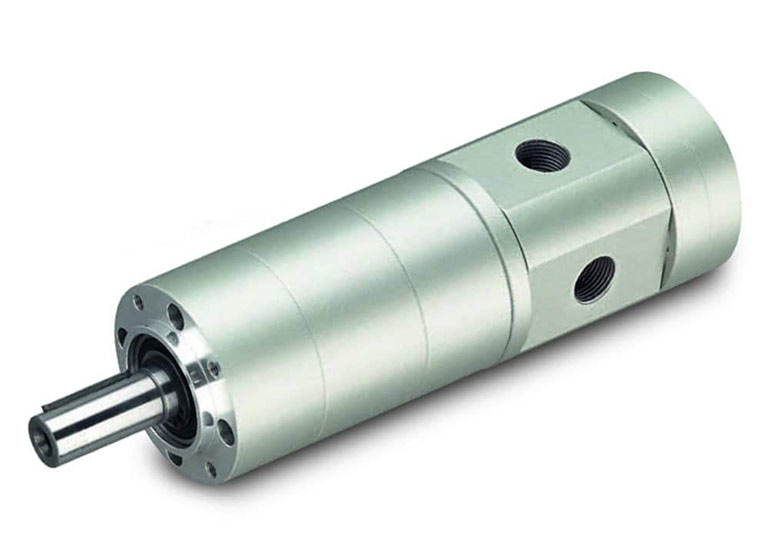By Josh Cosford, Contributing Editor
A motor is any device designed to convert one form of energy into rotational mechanical force. For example, an electric motor converts electrical potential into mechanical torque, and a hydraulic motor converts hydraulic energy from pressure and flow into mechanical torque. And an air motor converts compressed air into that same mechanical torque.

Air motors have many benefits — they offer infinitely variable speed by altering incoming flow and pressure while starting and stopping nearly instantly. Because of the cooling effect of expanding air inside the motor, air motors never overheat or burn out. Additionally, because only air powers these motors, any danger from electrical spark is a non-factor. Finally, with no messy hydraulic oil, air motors are perfect for clean conditions such as food & beverage or pharmaceutical applications.
By and large, the most common type of air motor used in fluid power is the rotary vane motor. Air motors function when compressed air expands against the vanes of the rotor and will create torque equal to the pressure differential between the inlet and outlet port multiplied by the surface area of the vanes. A rotor with multiple slots and spring-loaded vanes has low inertia, allowing them to start and stop quickly. In addition, low-friction internal components allow some vane motor designs to spin to 20,000 rpm.
Higher-powered, heavy-duty air motors are almost always the radial piston type. Vane-type motors rarely achieve more than a few horsepower capacities, but piston motors may output 25 hp or more. More efficient than their vane counterparts, the piston style also offers more torque. Of course, to achieve such high power, radial piston motors require high flow. At peak output, a 25-hp air motor may need close to 700 scfm.
Air motors are commonly available with gearboxes. Using the high-speed potential of air motors and applying a gearbox will offer high torque at a more reasonable output speed. 3:1 or 4:1 gearboxes are popular, meaning a 1,200 rpm air motor would spin at either 400 or 300 rpm, respectively. Torque becomes multiplied by a factor equal to the gear ratio, so in the case of a 3:1 gearbox, torque increases three-fold over the standard output of the 1,200 rpm motor.
Air motors are extremely easy to repair, with a simple set of components offering a long service life. Air tool oil ensures the moving parts are lubricated, avoiding excessive wear-causing friction. A high-quality filter-regulator-lubricator assembly at each motor location also provides steady, clean and lubricated air to ensure long service life from the motor.
Air motors find themselves in many applications requiring clean and reliable rotary power. The most popular choice in handheld tools — grinders, sanders, polishers and drills — are monopolized by air motors. The range of uses is vast, of course, and you can find them in mixers, winders, conveyors, agitators and tensioners. They are especially effective in applications requiring either cool operation or ones where the motor may be submerged in liquid.
Filed Under: Components Oil Coolers, Engineering Basics, Pneumatic pumps, Pneumatic Tips, Pumps & Motors